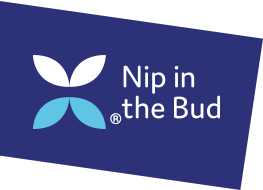Autism Tips For Teachers Fact Sheet
What is Autism Spectrum Condition?
Autism Spectrum Condition is (ASC) is a neurodevelopmental condition that affects communication, social interaction, and behaviour.
How might ASC present itself in class?
How the child will present will depend on a range of factors. Some children with ASC are highly motivated learners and will want to demonstrate their enhanced knowledge in school. They may be noted for calling out the answers, correcting mistakes by others and seeming to dominate the lesson. Other children may follow the lesson but will be electively mute and unable to contribute in class. Some children will struggle with transitions and be unable to get started on a piece of work without adult support. Others may seem distracted and frequently in their own world. Yet other students with ASC may have meltdowns triggered by a change in routine or sensory overload.
What can you do in class?
Consider sensory needs when arranging the classroom
Pupils with ASC often report intense sensitivity to unexpected loud noise, bright lights and strong smells. The sound of students chatting quietly or the presence of too much visual information in close proximity can be overwhelming. Some students benefit from being at the front of the class, near the teacher. Others require a separate workstation where they can screen out noise and visual distraction in order to focus properly. Some students require ear defenders to help them concentrate.
Identify learning strengths and difficulties
Even more able children with ASC may have specific learning difficulties that increase their stress and reduce their ability to access the curriculum. Difficulties with reading, writing and mathematics are common and will impact on motivation and mood of the child with ASC. Students will often require more time to process verbal information and respond to questions. Comprehension tasks requiring inference will be more challenging. Students with ASC will be entitled to reasonable adjustments, for example access to a laptop for written work, rest breaks etc.
Use Visual supports and strengths
Visual Timetables and associated visual aids will help students process the information that they cannot access when feeling overwhelmed. Having explicit information about what each lesson will entail will reduce the student’s anxiety and increase their engagement. Being able to refer back to a timetable will reassure the student that they can get to where they are supposed to be and that the school day will end at a set time. Having colour co-ordinated folders and systems for recording homework will also address the organisational difficulties that the child experiences. If online homework recording systems are not available, the student may require adult assistance to record their homework details.
Provide a safe space in school
Some students with ASC will need respite from sensory and social overload. To reduce anxiety and avert meltdowns, some schools provide either a safe area within the classroom or a safe room within the school. For example, some students go to the learning hub or to the library when they need a place to decompress. Other students cannot tolerate busy dining halls or playgrounds and benefit from eating in a quiet room with a small number of peers or joining a structured activity-based lunchtime club. Noisy overpopulated corridors can trigger intense anxiety in some children. However, an early pass can mediate against this.
Assist with social misunderstandings
Students with ASC are at increased risk of bullying and peer rejection. Cognitive rigidity and a tendency to be pedantic can also contribute to social misunderstandings. Students with ASC often need a higher level of staff support to negotiate the unwritten and everchanging social rules of school. Understanding that the student can be literal in their interpretation and have failed to have read non-verbal social cues, will allow the teacher to help close that gap in understanding and explain what went wrong. Often the teacher can act as a bridge between the student, their peers and other staff members in the school. As children on the spectrum are at much higher risk of anxiety and depression, support from a trusted member of staff can be invaluable
Where to go for support?
National Autistic Society: The leading UK charity for people with autism, their carers and their families. The NAS provide information, support and pioneering services. There are free resources for teachers to download and training that can be accessed.
Dr Lisa Honeyman
Principal, clinical psychologist and consultant
Lorna Wing Centre for Autism

